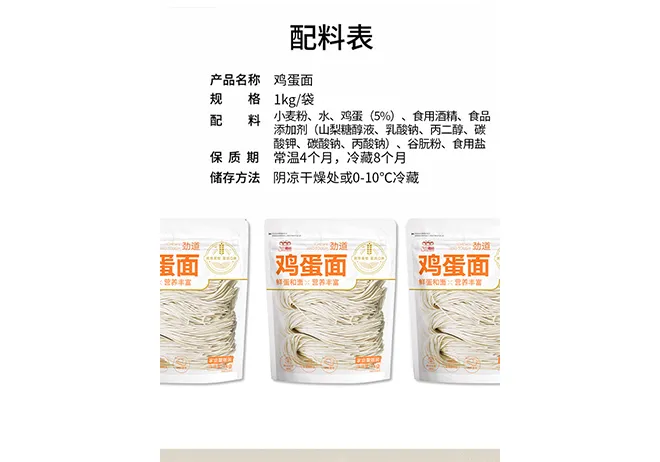noodles for diabetics
Noodles for Diabetics A Healthy Alternative
Living with diabetes requires constant attention to diet and nutrition. Carbohydrates, particularly, are often the largest concern for diabetics, as they directly impact blood sugar levels. However, the good news is that with the right choices, it's possible to enjoy dishes that traditionally contain noodles without jeopardizing blood sugar control. This article explores alternatives and strategies for incorporating noodles into a diabetic-friendly diet.
Understanding Carbohydrates and Blood Sugar
Carbohydrates have a significant effect on blood glucose levels. When a person with diabetes consumes carbohydrates, their body breaks them down into glucose, which then enters the bloodstream. For individuals with diabetes, managing carbohydrate intake is crucial to maintaining stable blood sugar levels. The key is not to eliminate carbohydrates entirely but to choose the right types and portions.
Choosing the Right Noodles
1. Whole Grain Noodles Whole wheat pasta and noodles made from whole grains are excellent choices. They contain more fiber than their refined counterparts, which helps slow the absorption of glucose into the bloodstream. The high fiber content also promotes a sense of fullness, making it easier to manage portion sizes.
2. Vegetable Noodles Spiralized vegetables such as zucchini, carrots, and squash can serve as a delicious and low-carb alternative to traditional noodles. These vegetable noodles are not only lower in calories and carbs but are also packed with vitamins and minerals. They can be sautéed, steamed, or eaten raw, making them versatile for various dishes.
3. Legume-Based Noodles Noodles made from lentils, chickpeas, or black beans are another excellent option. They boast higher protein and fiber content, which helps stabilize blood sugar levels and provides lasting energy. These noodles tend to have a unique flavor, which can add diversity to your meals.
4. Konjac Noodles Made from the konjac plant, these noodles are extremely low in calories and carbohydrates. Often referred to as “shirataki noodles,” they can be a great way to enjoy noodle dishes without the carb load. They absorb the flavors of whatever sauce or ingredients they’re paired with, making them a versatile option for a variety of recipes.
Portion Control and Balanced Meals
noodles for diabetics

Regardless of the type of noodle chosen, portion control remains essential for managing diabetes. A standard serving size of pasta, for instance, is about half a cup of cooked noodles. By keeping portions in check and balancing meals with a mix of protein, healthy fats, and non-starchy vegetables, individuals can create satisfying dishes that control blood glucose levels.
Flavoring Your Noodle Dishes
Avoid sauces that are high in sugar or unhealthy fats, as they can quickly counteract the benefits of healthier noodles. Instead, consider using fresh herbs, spices, garlic, and onion to flavor your dishes. These ingredients not only enhance taste but also provide various health benefits. Opt for homemade sauces where you can control the sugar content, such as tomato sauce made from fresh tomatoes, herbs, and olive oil.
Sample Diabetic-Friendly Noodle Dish
Here’s a simple recipe for a diabetic-friendly noodle dish
Zucchini Noodle Stir-Fry
Ingredients - 2 medium zucchini, spiralized - 1 bell pepper, sliced - 1 cup broccoli florets - 1 cup cooked shrimp or chicken breast - 2 tablespoons olive oil - 2 cloves garlic, minced - Soy sauce (low sodium) - Fresh ginger, grated - Sesame seeds (optional)
Instructions 1. In a large skillet, heat olive oil over medium heat. Add garlic and ginger; sauté until fragrant. 2. Add bell pepper and broccoli to the skillet, cooking until they start to soften. 3. Stir in the shrimp or chicken, cooking until warmed through. 4. Finally, add zucchini noodles and a splash of soy sauce. Cook for 2-3 minutes until the noodles are tender but firm. 5. Serve hot, sprinkled with sesame seeds if desired.
Conclusion
Incorporating noodles into a diabetic diet is entirely possible with mindful choices. By opting for whole grains, vegetables, and legume-based noodles, diabetics can enjoy flavorful and satisfying meals without the guilt. Remember to pay attention to portion sizes and focus on balanced ingredients to maintain stable blood sugar levels. With a little creativity and planning, noodle dishes can be both delicious and diabetes-friendly!
-
Is Whole Wheat Pasta Healthy?NewsMay.30,2025
-
Are Soba Noodles Good for Weight Loss?NewsMay.30,2025
-
Are Buckwheat Soba Noodles Healthy?NewsMay.30,2025
-
Are Buckwheat Soba Noodles Gluten Free?NewsMay.30,2025
-
Are Buckwheat Noodles Good for You?NewsMay.30,2025
-
A Healthy Way to Savor Soba and Spicy FlavorsNewsMay.30,2025
-
What Are Lanzhou Noodles?NewsMay.30,2025
Browse qua the following product new the we

















































































































